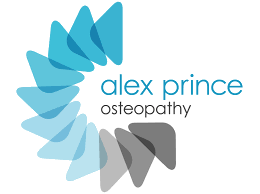Frequently asked questions
What is Osteopathy?
Osteopathy is a well-established and recognised healthcare treatment, which can help with a variety of, predominantly, musculoskeletal problems.
Osteopathy focuses on you, the patient, and is a whole body (holistic) approach to diagnosing and treating musculoskeletal injury, imbalances in your body and the resulting pain it causes.
Osteopathy not only targets treatment of an injured area but tries to find the root cause of problems, which may be distant and seemingly unrelated to the painful area. read more…
Is Osteopathy safe?
Osteopathic treatment is an extremely safe and natural approach to health care which works with the body's own health and repair mechanisms.
Osteopathy is a recognised health profession, and has the same safeguards that you would enjoy if you visited a doctor or a dentist.
Is Osteopathy regulated?
All osteopaths in the UK are regulated by the General Osteopathic Council (GOsC). It is against the law for anyone to call themselves an osteopath unless they are registered with the GOsC, which sets and promotes high standards of competency, conduct and safety.
Will I receive treatment on my first visit?
In the main, yes. The primary aim of your initial consultation is for me to establish what is wrong and whether osteopathy is a safe and appropriate treatment for you. Providing there are no contraindications I would normally aim to treat you on your first visit.
Is Osteopathic treatment painful? Will I be sore after treatment?
Generally Osteopathic treatment is gentle, and our patients are comfortable during and after the treatment. Some deep muscular techniques, however, may be uncomfortable. We will let you know if something is likely to be uncomfortable.
Every individual responds slightly differently to treatment. Most will experience little or no discomfort after a treatment session. Some patients report discomfort after treatment for about 24 hours, which will then subside.
We will give you advice on how to keep any short term discomfort to a minimum, and on how much activity you should expect to do in the days after treatment.
Do I need a referral from my GP?
No. You don’t need a referral to consult us about a problem.
Do I need to tell my doctor that I am visiting an Osteopath?
It is not necessary to advise your GP. As a primary healthcare practitioner, we are clinically trained to assess patients without recourse to medical records. Occasionally we may need to contact your GP about aspects of your health and medical history. We will always obtain your consent before contacting your GP or other medical carers.
Will I need to take any clothing off?
We will respect your comfort and dignity at all times. For most examination and treatment it is useful and helpful to remove some clothing. This is not essential if you are not comfortable with this.
We suggest you wear clothing that you are comfortable to be examined in. Well covered underwear or sports clothing is generally appropriate.
Can I bring a chaperone?
You are welcome to bring a companion with you. Please be aware that they will become party to all conversations during the appointment.
Anyone under the age of 16 should be accompanied at all times by a parent or appointed guardian.
Can I help myself?
YES. There is always plenty that you, the patient, can do to help your condition. As part of your consultation we will advise you if there are particular activities or exercises you should or shouldn’t do.
How many treatments will I need?
We will discuss this with you at your first appointment. Typically, an adult might need 3-6 sessions over a period of several weeks, however if you have a longer term/chronic condition you may well require more sessions.
Some patients choose to visit at regular intervals for preventative maintenance treatments.
Babies and children often need no more than three or four sessions to see good improvement.
Can I park and is there wheelchair access?
Yes, there is free parking outside the clinic and there is wheelchair access to the clinic.

